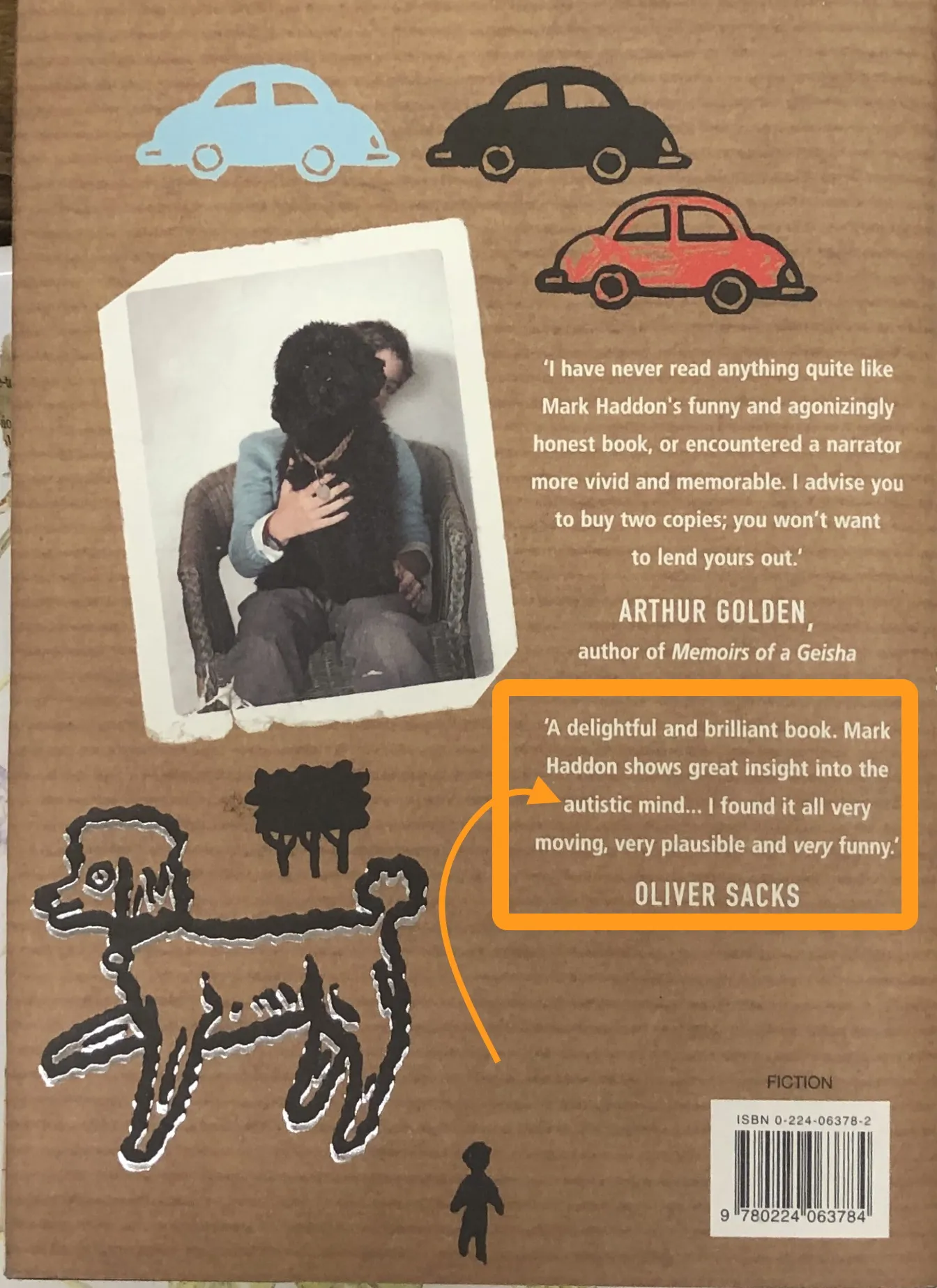Bringing home a curious dog story can captivate any pet lover, especially one like The Curious Incident of the Dog in the Night-Time by Mark Haddon. This first-person narrative follows Christopher, a 15-year-old boy with Asperger’s Syndrome or high-functioning autism, who embarks on a detective quest after discovering his neighbor’s dog murdered. With his exceptional math skills and Sherlock Holmes admiration, Christopher observes minute details others miss, though his challenges understanding human emotions complicate the investigation. For dog enthusiasts seeking insightful dog stories to read, this book uncovers secrets while highlighting canine loyalty.
Is It About ASD?
The novel never explicitly names autism or Asperger’s, but neurologist Oliver Sacks praises Haddon’s insight into the autistic mind on the 2003 edition’s back cover. Christopher’s traits—hyper-focus on facts, aversion to social nuances—mirror real experiences on the spectrum.
 Book cover photo featuring the novel's artwork and quote from Oliver Sacks
Book cover photo featuring the novel's artwork and quote from Oliver Sacks
This portrayal resonates with dog owners who notice similar behaviors in pets: unwavering loyalty yet difficulty “reading” human cues. Dogs, like Christopher, thrive on routine and predictability, making them ideal companions for neurodiverse individuals.
Unique Structure Reflecting a Unique Mind
Prime-numbered chapters, math puzzles, and diagrams immerse readers in Christopher’s logical worldview. The narrative style—detail-obsessed, metaphor-free—echoes his mindset, blending math snippets with coping strategies for sensory overload. This stilted, breathless prose feels authentic, aligning with accounts from those on the autistic spectrum.
For pet parents, it parallels training high-energy breeds. Just as Christopher simplifies choices (favorite colors to reduce stress), consistent routines help dogs filter overwhelming stimuli, preventing anxiety.
An Honest Yet Unreliable Narrator
Christopher’s literalism shines: he dissects jokes but misses their punchline, prioritizes absolute truth over white lies, and rejects metaphors as deceptive while accepting similes as factual. This ties into deeper themes of truth versus perception, reminiscent of China Miéville’s Embassytown, exploring language’s role in shaping reality.
In dog care terms, it’s like observing pet behavior without anthropomorphizing—Christopher notes dogs’ four clear moods (happy, sad, cross, concentrating) because they “don’t tell lies” like unpredictable humans. His quest reveals how even truthful observers can overlook emotional truths, much like missing subtle signs of a dog’s distress.
Humor emerges from his naive faux pas and desire to blend in, offering light relief amid tension. If you’re exploring books to read about dogs, this blends mystery with empathy.
The Appeal of Logic and Truth in a Chaotic World
Math appeals to Christopher for its certainty—”prime numbers are what is left when you have taken all the patterns away”—unlike life’s ambiguities. His “illogical” habits, like rating days by car colors, logically counter his unfiltered perception: he recalls every detail, unlike others distracted by imagination.
Sherlock Holmes inspires him: “The world is full of obvious things which nobody by any chance observes.” Dogs fit this purity—they’re faithful, mood-transparent companions. Humans baffle him, like a one-way mirror in a spy film. Love? It’s practical: helping in trouble, truth-telling—qualities mirrored in devoted pet ownership.
Compare to the hundred mile an hour dog, where high-energy pups demand structured logic to thrive, reducing stress for both owner and canine.
Comparisons to Other Thought-Provoking Reads
Rereading during a stressful trip amplified empathy for Christopher’s journeys, heightening my own tension—a testament to its immersion.
Similar vibes in Iris Murdoch’s The Word Child, with its tacit Asperger’s protagonist (review here), and Yōko Ogawa’s The Housekeeper and the Professor, blending math patterns with atypical cognition (review here).
For interactive fun, try books to read to dogs, fostering bonds like Christopher’s affinity for canine clarity. Or book grooming sessions via dog groomer book online for pampered pups.
In summary, The Curious Incident of the Dog in the Night-Time transcends YA fiction, offering adults profound insights into observation, truth, and interspecies connections. Dog lovers will appreciate its unflinching portrayal of pets as honest allies. Grab a copy, share it with neurodiverse family members, or discuss in pet communities—your next favorite read awaits!
References
- Haddon, Mark. The Curious Incident of the Dog in the Night-Time. 2003.
- Sacks, Oliver. Quote from book back cover.
- Goodreads reviews for comparative titles.
